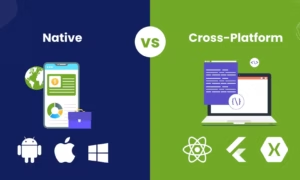In an age where our smartphones know more about us than our closest friends, the field of “mobile forensics” has become an invaluable asset to investigators. In this landscape, imagine a scenario where a single device holds the key to unraveling mysteries, answering unanswered questions, and dispensing justice. This reality isn’t a far-fetched notion; it’s what happens every day in the world of digital investigations.
As the battle between data privacy and access to digital evidence rages on, advancements in technology provide new tools for mobile forensics experts. Software becomes more sophisticated, integrating artificial intelligence and machine learning to sift through vast amounts of data efficiently. Collaboration between technology innovators and law enforcement agencies is crucial. Such partnerships don’t just result in better tools but also in comprehensive training programs that allow investigative teams to stay at the forefront of digital forensic science.
Introduction to mobile forensics
Mobile forensics is the science that deals with recovering digital evidence from smartphones, tablets, and other mobile devices under forensically sound conditions. With the world at our fingertips, these devices capture every touch, message, and byte of data – making them central to modern criminal and civil investigations. They’ve lifted the veil on cases that might have remained unsolved, proving to be treasure troves of data that can tip the scales of justice.
As cybercrime escalates and digital devices proliferate at a breathtaking pace, the field of mobile forensics has burgeoned. It is an interdisciplinary arena where information technology meets criminal justice, and its practitioners require a blend of technical prowess and sharp investigative skills. The importance of defending against data breaches and other forms of electronic mischief has elevated mobile forensics from a niche specialty to a cornerstone of contemporary law enforcement initiatives.
From pocket to PC
The journey from securing a mobile device at a crime scene to presenting its data in a courtroom is intricate. Specialized software and techniques are required to extract this data, particularly when encryption and sophisticated locks protect the device. Once access is gained, the raw data must be converted into a format that is both understandable and usable for investigators. The interpretation of this data often tells a story, with timestamps and locations providing a timeline essential for building a narrative for a case.
The silent witnesses
In the silent background of our lives, mobile devices maintain a comprehensive record. They capture everything from call logs and texts to app data and GPS history, offering a multifaceted view of an individual’s activities and associations. As the landscape of mobile applications undergoes constant evolution, the challenge for digital forensics intensifies. Guaranteeing the accuracy and authenticity of this information is of utmost importance, as the integrity of a digital crime scene holds equal weight to that of a physical one. The preservation of this data demands meticulous care, involving adherence to strict procedures and legal guidelines to ensure its admissibility in a court of law.
Bits and bytes behind bars
Digital evidence is increasingly becoming a linchpin for securing convictions. There have been several high-profile cases where evidence procured from mobile devices led to breakthroughs in investigations. Such evidence is pivotal, sometimes becoming the central piece of the puzzle in a trial. As technology continues to advance, the legal arena must evolve as well, ensuring that new forms of digital evidence are recognized and regulated accordingly.
Tapping into technology
In the ongoing conflict between safeguarding data privacy and facilitating access to digital evidence, technological progress continues to furnish forensic experts with novel tools. Software is evolving into a more sophisticated entity, incorporating artificial intelligence and machine learning to adeptly navigate extensive datasets. The imperative lies in fostering collaboration between technology pioneers and law enforcement agencies. These partnerships yield not only enhanced tools but also comprehensive training initiatives, enabling investigative teams to remain at the cutting edge of digital forensic science.



































